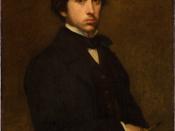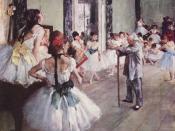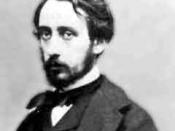Expressionism started as a visual art form for an antidote to the beauty of impressionism. The point was to deny immediate perceptions of things, to analyse things then send them back as a pure but different view of that thing (it?s sometimes called ?anti-realism). I can give you a very simple example of expressionism: If I showed an impressionist a vase of flowers, they might produce something akin to ?A Woman Seated beside a Vase of Flowers? by Edgar Degas. An expressionist might show you something like "Flowers in Vase" by Mary Lee Lombard or maybe something not at all like that.
The Expressionist theatre movement developed in Germany around 1905. It was characterised by attempts to dramatise subjective states through distortion. It used images that were intense and scenes were seen through the eyes of the main character. The plot was typically non-linear, and might travel to unrelated events in a distorted and dreamlike manner.
In the same way that melodrama uses the characters description as their name, expressionist theatre used characters as representative, like: man, woman, mother, priest.
The theme of the plays politically featured left-wing causes like anti-war, de-humanisation by society and deterioration of the family. This was a strong motivation for playwrights.
The leader of expressionist theatre, George Kaiser was a German who introduced many new techniques to theatre, including; juxtaposition of fantasy and reality, rapidly shifting scenes and larger-than-life characters. Kaiser wrote a trilogy of plays called Coral Gas about a worker who works in a gas plant and tries to get his workmates to come to an outdoor farming job. His son finds the plant produces lethal gas and blows up the factory. He also wrote ?From Morn to Midnight? which pronounced the futility of modern society, showing disjointed scenes in a twisted...


